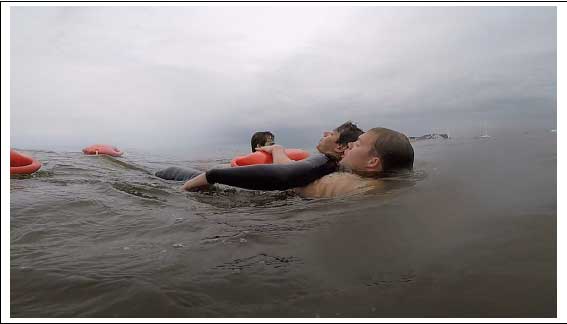Mike Hudson’s article on open water rescue from Fire Engineering emphasizes the critical techniques, equipment, and considerations necessary for effective rescues in aquatic environments. Here’s a summary of the key points discussed:
Overview of Open Water Rescue
- Rescue Context: Open water rescues occur in dynamic environments, such as oceans, lakes, and rivers, where conditions can change rapidly, making rescuer safety paramount.
- Common Risks: Drowning remains a leading cause of accidental death. Understanding water dynamics like currents and waves is essential for both rescuers and victims.
Essential Equipment
- Rescue Fins:
- Purpose: Enhance swimming speed and efficiency in turbulent waters.
- Design Features: Typically made of rubber with non-adjustable straps for quick donning. They should fit snugly and have drain holes.
- Benefits:
- Improve speed and reduce fatigue during rescues.
- Enable quicker access to victims and better maneuverability in currents.
- Limitations: Not ideal for rescues in flat water where only a short reach is needed
- Rescue Floatation Devices (RFDs):
- Types: Includes torpedo buoys and rescue tubes.
- Functionality: Designed to support victims and assist in towing.
- Deployment: RFDs must be easily deployable and should have a lanyard of appropriate length to allow safe distance from a panicking victim
Rescue Techniques
- Initial Actions: Swift response is crucial. Rescuers should immediately assess the scene for safety and potential hazards.
- Approaching Victims: Techniques include using RFDs to stabilize victims while keeping their airways clear, and managing their orientation in the water.
- Safety Considerations: Rescuers must be trained to handle various scenarios, including spinal injuries and ensuring they do not put themselves at risk during the rescue
Drowning Resuscitation
- Immediate Response: Initiate resuscitation without delay. Employ high-flow oxygen and manage the airway effectively.
- Airway Management: Using adjuncts like oropharyngeal airways can prevent complications like gastric distension, which is common in drowning victims
- Importance of Timing: Successful outcomes depend heavily on quick rescues and prompt medical intervention, especially within the first few minutes
Conclusion
Hudson’s piece underscores the importance of proper training, equipment, and immediate action in open water rescues. The integration of tools like rescue fins and floatation devices can significantly enhance the effectiveness of rescue operations while prioritizing the safety of both the rescuer and the victim.
